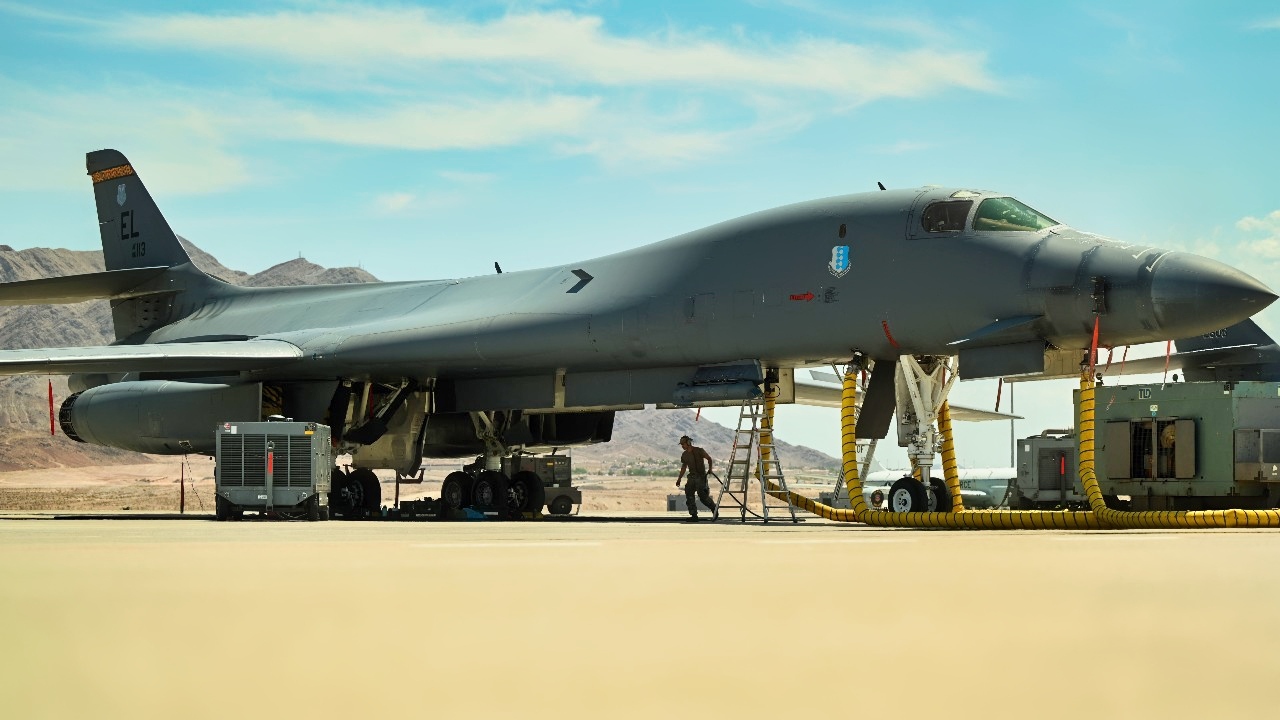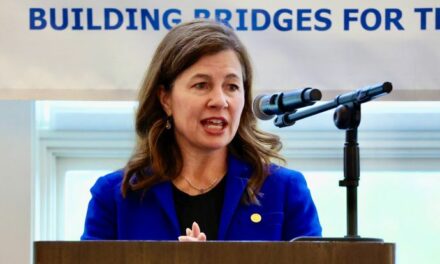We support our Publishers and Content Creators. You can view this story on their website by CLICKING HERE.

Why Is the Air Force Bringing Back B-1B Lancer Bombers from the Dead?:” “Rage” and “Lancelot?” Am I talking about some new King Arthur play on Broadway?
No, just two old B-1B Lancer bombers with heady nicknames being pulled out of the U.S. Air Force’s boneyard in Arizona to active duty.
So Why is the Air Force un-retiring the old warbirds? Let’s take a closer look.
What’s the Boneyard?
The Boneyard, officially the 309th Aerospace Maintenance and Regeneration Group (AMARG) at Davis-Monthan AFB, Arizona, is not where every airplane goes to die.
You see, the Air Force is required by Congress to keep only 45 B-1B Lancer bombers in service. Seventeen have been stored at the Boneyard in Arizona to maintain this limit, but four are still considered “in reclaimable condition.”
That’s where Rage and Lancelot come in. They were in Type 2000 storage with silicone-looking sealant to protect gaps, engines, and glass. Type 1000 storage is one level higher in readiness when an airplane is still airworthy.
Putting the Anger Back in Rage
B-1B Lancer number 86-0115 “Rage” has been returned to active duty to meet the required 45 number. On July 2, Rage flew to Tinker Air Force Base, Oklahoma, to be restored to full-time status.
The rest of this year will be used to put the anger back in Rage. According to the Aviationist, “the bomber will undergo depot-level maintenance to incorporate missed upgrades from its retirement years and perform a thorough check of the airframe and avionics before returning to a frontline unit.”
Lancelot Is Back in the Saddle
What about Lancelot? This airplane has also been pulled out of storage from the Boneyard this year. Lancelot is replacing another B-1B bomber that was the victim of a harrowing engine explosion at Dyess Air Force Base in Texas during a regular maintenance period in April 2022. This caused $15 million in damages and hurt a crew member working on the airplane.
The Air Force figured the damaged bomber would cost too much to replace. Since Lancelot was in better condition, it got re-called to the Major Leagues.
It’s been a long three years of waiting for Lancelot. The B-1B had been retired from the 34th Bomb Squadron at Ellsworth Air Force Base, South Dakota since March 2021.
The Structure of Lancelot Is “Still Pretty Good”
Joseph Stupic, senior materiel leader at the B-1 program office, told the Air Force Times about Lancelot’s promotion.
“This was the one that was probably the best for not requiring as much work,” Stupic said of Lancelot. “Some of them need structural updates and structural repairs. We looked at it and said, ‘Hey, the structure on this plane is pretty good. We can bring it into the fleet at a lower cost.’”
What Happens at the Boneyard?
Most bombers never make it out of the Boneyard. The Air Force does what it can to preserve them. Maintenance crews drain all the fluids and then use a preservative oil to keep them lubricated in case they ever need to be upgraded in status. They remove egress systems and seal the airplanes off the best they can to survive the elements.
The last time a B-1B was recalled from the Boneyard to active duty was in 2004. That year seven came back from the dead.
B-1B Lancer Crews Had to Get Busy
Lancelot needed a significant amount of work. Rockets in the ejection seats had to be replaced. All components required a safety check. Five hundred components had to be swapped over three weeks. Plus, the heat and sand from the Arizona desert takes a toll on an airframe while it is in storage.
At Tinker Air Force Base, crews made sure that that Lancelot received the upgrades that it missed while at the Boneyard. Maintenance personnel installed the new equipment and conducted a myriad of checks and modifications. Then there will be a longer period of maintenance in the coming months before it goes to Dyess for active duty.
So, Lancelot and Rage will be back in business. I always thought that airplanes went to die at the Boneyard and were only cannibalized for parts. I didn’t know they could be recalled to active duty after this type of retirement. Give the Air Force credit for saving taxpayer money in exchange for a large amount of elbow grease. The people working on Rage and Lancelot should be proud. Crew members can say they brought back two bombers from the dead – something that not all airmen can claim.
About the Author: Dr. Brent M. Eastwood
Brent M. Eastwood, PhD, is the author of Don’t Turn Your Back On the World: a Conservative Foreign Policy and Humans, Machines, and Data: Future Trends in Warfare, plus two other books. Brent was the founder and CEO of a tech firm that predicted world events using artificial intelligence. He served as a legislative fellow for U.S. Senator Tim Scott and advised the senator on defense and foreign policy issues. He has taught at American University, George Washington University, and George Mason University. Brent is a former U.S. Army Infantry officer. He can be followed on X @BMEastwood.

 Conservative
Conservative  Search
Search Trending
Trending Current News
Current News 



